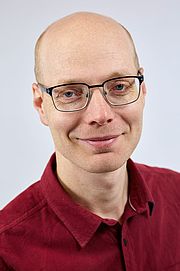Green campus Geisenheim
The Geisenheim university location has a lot to offer when it comes to greenery. In addition to the numerous courses on the subject of plants and green structures, the campus offers a wide range of green topics with its two historical parks and many planted areas.
The outdoor facilities at Geisenheim University are subject to different areas of competence. The management of park maintenance from the area of competence of the Plant Use Professorship has an overview of most of the green areas and the parks. It surveys the green developments on the university campus and tries to bring them together in a meaningful way. Individual projects and general maintenance are then taken over by the park maintenance team, provided capacity permits. Larger projects or more specialist tasks, such as regular tree inspections and tree care measures, are also outsourced. In addition to these general topics, the various study areas also manage some of their own projects, research areas and areas of competence on the topic of green.
Park maintenance team



Room 019
Phone über +49 6722 502 543
Klaus-Dieter.Oppenhaeuser(at)hs-gm.de Details

The historic parks Monrepospark on the South Campus and Rudolf-Goethe-Park on the North Campus are defining elements and deeply linked to the roots of the Geisenheim university location. Over time, a diverse and old tree population has developed there. The park and the trees it contains, like many of the university's buildings, are listed buildings. But here too, the effects of climate change are increasingly becoming apparent. Once very favorable in terms of climate, the mild warmth develops into summer heat. The Mediterranean-like climate develops persistent dry phases. The future of the university parks must now be well thought out and precisely planned so that the old trees can be largely preserved, renovated in a way that is compatible with monuments and the climate, and developed in a resilient manner.
An exciting task.
More about the history of the parks can be found on the following pages.
There are beds and plantings of various ages throughout campus. As diverse as the choice of plants can be, the function of green elements is just as diverse. Plantings can separate or connect the room through their spatial effect. A certain character or atmosphere can be created with flowers, colors, structures and textures. Plants shape the space with their liveliness and also with their ecological benefits when people and animals benefit from them.
The skills of planning with plants are discussed and addressed in various subjects. The Plant Use Professorship has fully embraced this topic. She develops existing and designs new green elements on the grounds of Geisenheim University. Many beds are also used for teaching and are designed as display beds.
The university location is committed to preserving old, special habitat trees. Of course, parks should be attractive, vital and well maintained. Dying or already dead trees apparently do not belong in the picture. But these old "habitat trees" offer a particularly large amount of living space for a wide variety of creatures - from birds and bats that nest in tree hollows to special species of beetles that appropriate the wood. The decomposition processes may limit the stability of habitat trees and dead wood and are therefore particularly carefully monitored and checked. But not all habitat trees are dying or are already dead wood.
Healthy trees can also provide special habitats - which is why there are habitat trees in the park that have been awarded a plaque. The most important examples are explained here.
PLANTINGS
The central campus is located to the east above the railway line. In addition to the historic Rudolf Goethe Park, important green structures here are often representative beds and edge plants.
The southern campus is below the railway line and is essentially characterized by the historic Monrepospark and its beds.
More about the Professorship for Planting Design
PLANT.ed is a learning platform of the Professorship for planting design and represents a first point of contact for students who want to deal with planting design and planning. When looking for suitable information on these topics, one can quickly "get lost" in the "shoals" of an as yet undefined quantity and variety. On the one hand, PLANT.ed is intended to help with orientation in the subject area and, on the other hand, to support the teaching content of the various lectures and seminars. PLANT.ed is located on the ILIAS learning platform of Hochschule Geisenheim University and can be viewed by students and employees of HGU at any time.




![to campus south;; M. Faust 2023 [Translate to English:] Bild Unter Campus](/fileadmin/_processed_/1/1/csm_MF_HEADER_UNTERERCAMPUS_b3323b9354.jpg)

